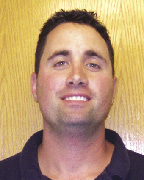In April 2008, the EPA issued a final rule under the authority of section 402(c)(3) of the Toxic Substances Control Act (TSCA) to address lead-based paint hazards created by renovation, repair, and painting activities that disturb lead-based paint in target housing and child-occupied facilities. This final rule requires certification of firms, worker training, and the accreditation of training providers. .
The final rule applies to a vast array of professionals in the business of owning, managing, improving or maintaining target housing and child occupied facilities, such as:
*Builders/contractors of single or multi-family housing construction, and residential remodelers
*Specialty trade contractors, e.g., plumbing, heating, and air-conditioning contractors, painting and wall covering contractors, electrical contractors, finish carpentry contractors, drywall and insulation contractors, siding contractors, tile and terrazzo contractors, glass and glazing contractors
*Real estate professionals, e.g., lessors of residential buildings and dwellings, residential property managers
*Child day care services
*Elementary and secondary schools, e.g., elementary schools with kindergarten classrooms
*Other technical and trade schools e.g., training providers
*Engineering services and building inspection services, e.g., dust sampling technicians
Essentially, ''target housing'' is defined in TSCA section 401 as any housing constructed before 1978, except housing for the elderly or persons with disabilities (unless any child under age 6 resides or is expected to reside in such housing) or any 0-bedroom dwelling. Under this rule, a child-occupied facility is a building, or a portion of a building, constructed prior to 1978, visited regularly by the same child, under 6 years of age, on at least two different days within any week (Sunday through Saturday period), provided that each day's visit lasts at least 3 hours and the combined weekly visits last at least 6 hours, and the combined annual visits last at least 60 hours. Child-occupied facilities may be located in public or commercial buildings or in target housing.
Though lead paint was banned from residential use thirty years ago, it remains in many residential and commercial properties throughout the country (lead was used in part to enhance the life of paint). The EPA's increasingly aggressive stance on lead paint is due to the health problems that lingering lead-paint causes. Renovation, repair, and painting activities that disturb lead-based paint can create lead contaminated dust and debris that is hazardous to workers and occupants if not properly addressed, Inhalation and ingestion are the major concerns - especially with respect to lead paint dust.
Lead dust is a discreet danger: it is easy to dismiss dust that we cannot see, feel or taste. People can inhale and ingest lead dust that is created from deteriorated paint or during renovation or repainting projects. Even renovations that do not directly involve lead-painted surfaces, can disturb those surfaces and cause paint dust to be released into the air. A simple dust mask is insufficient to protect one from exposure.
If some of this sounds familiar, it may be that you're seeing the similarities between the final rule of this past spring and the EPA's Pre-renovation Education Rule, which was passed in 1999. The Pre-education Rule essentially requires that, anyone whose compensated work disturbs paint in housing built before 1978, delivers notice to housing owners and occupants concerning the work and the potential danger to their health. The final rule encompasses a wider range of renovations and improvements activities, as well as requiring worker training. The final rule also affected the brochure that must be given to housing owners and occupants - beginning in December of this year the brochure you must hand out is changing. The new brochure is called "Renovate Right: Important Information for Families, Child Care Providers and Schools" and is available at http://www.epa.gov/lead/pubs/pubs/renovaterightbrochure.pdf. Confirmation of receipts of this brochure must be saved for three years.
Lead paint may seem like old news. But, a full awareness of the many ways in which lead can be encountered, then ingested or inhaled, is crucial. The Environmental Protection Agency is taking an aggressive stance on ensuring people are informed and taking the proper measures to protect themselves and others. Look for the New England states to respond to the rule with their own programs, which, when approved by the EPA, will take precedence over federal regulations. For more information, go to the U.S. Environmental Protection Agency (EPA) website, www.epa.gov/lead.
Joseph Giacalone is president of Arch Painting, Inc., Woburn, Mass.
Tags:
EPA's final rule affects property managers, maintenance and construction personnel
July 30, 2008 - Owners Developers & Managers
 (1).png)








